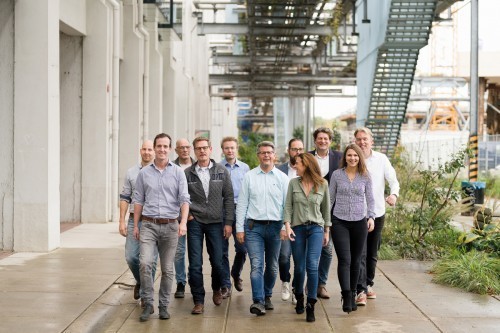Atomically thin coatings on innovative panels enable new types of solar constructions for new-generation spacecraft.
The Dutch start-up SALD B.V. (Eindhoven) is reporting increased demand for its solar panel technology from the space sector. The Spatial Atom Layer Deposition (SALD) technology developed by the company enables a new generation of solar panels to be produced with greater efficiency and stability, the company announces. The patented process can be used to produce coatings that are as thin as a single atom. These are ideal for integration into the next generation of spaceships currently being launched by private companies such as Virgin Galactic (Richard Branson), Blue Origin (Jeff Bezos) and SpaceX (Elon Musk). All three space billionaires are vying for the future trillion-dollar business of traveling into space.
SpaceX with integrated solar panels instead of solar sails
SALD points to SpaceX's "Crew Dragon" as the best example of the integration of innovative solar panels into a space capsule. In June 2020, the manned spacecraft carried two astronauts to the International Space Station (ISS) on a Falkon 9 rocket, also from SpaceX, on behalf of NASA. SpaceX's first regular astronaut launch took place on November 16, 2020. The November crew - 'Crew-1' - is the first to be officially flown to the ISS by Crew Dragon, following the successful manned test in the spring.
 Always in a good mood in space: the SALD team
Always in a good mood in space: the SALD team
One of the features of the space shuttle is that the capsule's hull is almost completely covered between the propulsion system and the tip by innovative, flexible yet robust solar panels. These two properties - flexibility and robustness - are achieved by an atom-thin sheathing, which can be produced using SALD technology. After leaving the earth's atmosphere, the solar panels on the hull can expand or shrink depending on whether they are exposed to sunlight or not. This integration of the solar energy supply into the hull is considered to be a key feature of future space ships, as it eliminates the need for the costly and unsafe folding out of solar sails. The huge sails are prone to tearing when they are folded and unfolded, which is traditionally done using swivel joints and accordion-like constructions. Cracks and other mechanical faults in the traditional solar sails can only be repaired by astronauts working outside.
As revolutionary as the atom-thin coating process is, it has already been tried and tested, emphasizes the Dutch start-up. SALD was founded as a spin-off from the company SoLayTec, which has been supplying spatial ALD machines for the mass production of solar panels, primarily to China, since 2010. This technology is considered to be decisive for China's success in dominating the global market with good yet inexpensive solar panels within just a few years.
Future market of solar satellites
"Now that the SALD process has proven itself in mass production, it is ready for demanding use in space," explains SALD CEO Frank Verhage. He continues: "Solar power is not only important for manned space capsules such as Crew Dragon, but for all man-made structures in space. This also includes satellites, space stations and all future space vehicles." At the last count at the end of March 2020, there were almost 2,700 active satellites orbiting the Earth, with a drastic increase expected. Elon Musk's Starlink project alone, which aims to provide the entire globe with high-speed internet, will need up to 12,000 satellites over the next few years for this mission.
"This new generation of mini-satellites, some of which are as small as a tennis ball or a fridge, will create an unprecedented demand for solar panels in space. Atomically thin coatings applied by Spatial Atom Layer Deposition will be standard in all these cases," explains Frank Verhage.
With "Spatial Atom Layer Deposition", SALD has developed a unique, patented process for applying coatings on an industrial scale that are as thin as a single atom. These atomic coatings will revolutionize entire industries, including the production of battery cells for cars and smartphones, the textile industry, polymer electronics (organic computer chips), the solar energy sector and the packaging industry for consumer goods and convenience food - at least that's what the company believes.


